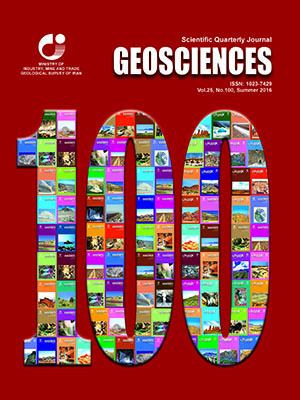Document Type : Original Research Paper
Authors
1 Assistant professor, Department of Geology, Faculty of science, Islamic Azad University, North Tehran branch, Tehran, Iran
2 Ph. D. Student, Department of Geology, Faculty of science, Islamic Azad University, North Tehran branch, Tehran, Iran
3 Assistant professor, Geosciences Research Center, Geological survey of Iran, Tehran, Iran
Abstract
The early carboniferous Mobarak Formation was studied in southern flank of Ayenehvarzan–Dalichai anticline, in Aru and Seyedabad sections, east of Tehran. The aim of this study is to determine microfacies, interpretation of depositional environments and sequence stratigraphy of the Mobarak Formation. In this study, the thickness of Mobarak Formation in Aru and Seyedabad sections varies from 133 to 65 meters and consists of limestone with intercalations of shale and marl. According to lithological characteristics, the Mobarak Formation subdivided into several rock units. The Mobarak Formation is disconformably overlain by Jirud Formation and underlain by Dorod Formation. Ten microfacies have been recognized on the basis of depositional remarks and petrographic analysis. These carbonate facies belong to 4 major sub-environments including beach/tidal flat, lagoon, barrier/sand shoal and open marine. These facies deposited in a homoclinal carbonate ramp and include two sedimentary sequences.
Keywords

